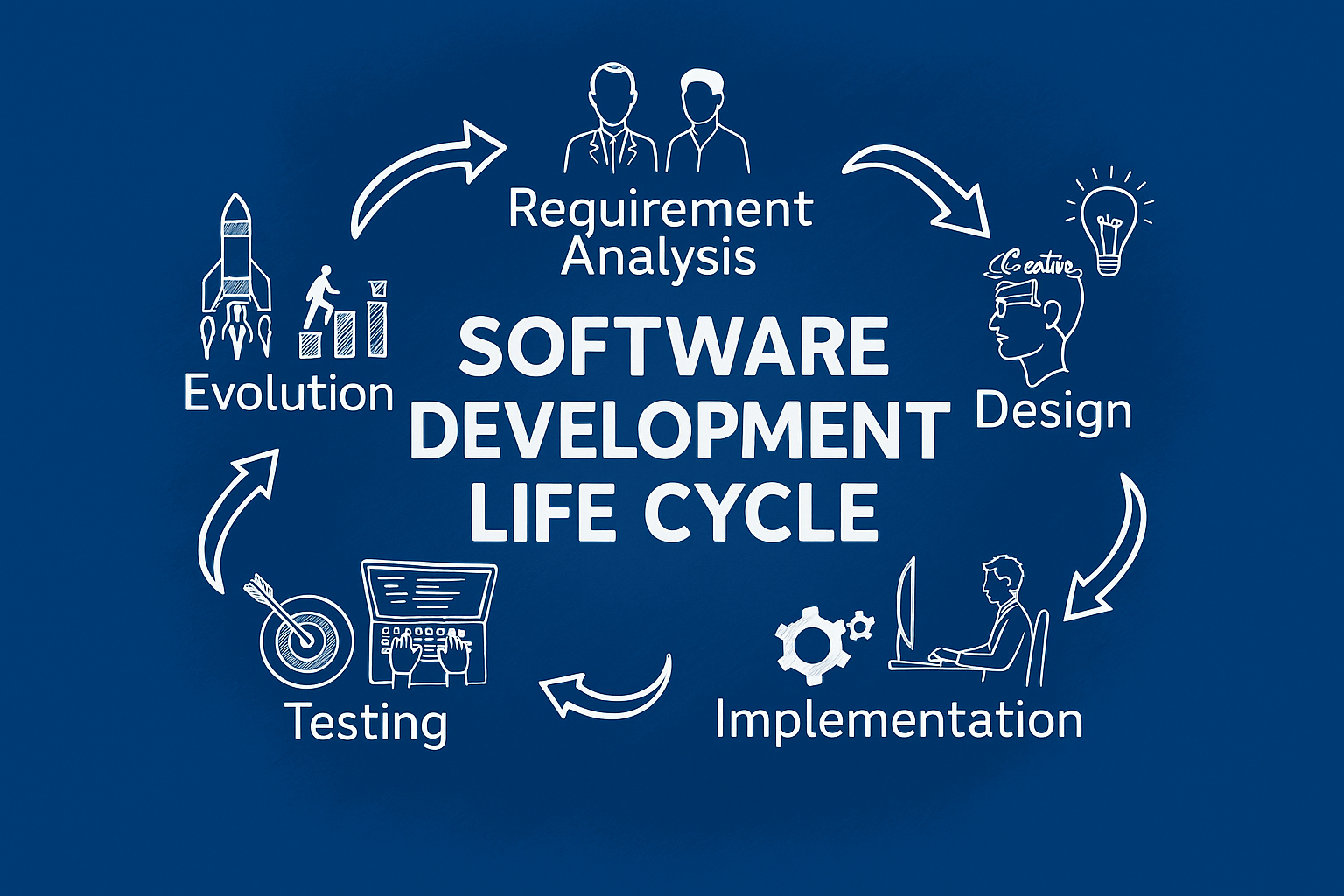
October 03, 2024
General
How Product Discovery Drives Technological Innovation
Today, more and more companies face increasing pressure from both customers and investors who expect rapid innovation and constant upgrades. However, innovation doesn't always stem from just genius ideas; it often arises from well-thought-out and organized approaches to product discovery. By implementing these structured approaches, product teams are capable of building truly innovative, if not revolutionary, solutions.
In this article, we will define product discovery, highlight the main challenges it presents, and explore key ways in which product discovery drives innovation.
 Source: TCGen
Product discovery techniques are used to test ideas before significant resources are allocated to product development. The goal of product discovery is to reveal valuable insights and opportunities that help build exceptional products.
One of the key aspects of product research is understanding your target audience.
By conducting thorough market research, analyzing user behavior, and gathering feedback, you can gain valuable insights into the pain points, desires, and preferences of your potential customers. This knowledge forms the foundation for creating products that resonate with your audience.
In addition to understanding customer needs, product discovery also explores the broader context in which your product will exist. This involves analyzing the competitive landscape, industry trends, and technological advancements.
Product discovery can require a significant investment from the company. Before launching this process, it's essential to ensure that the idea is not only beneficial but also worth the effort. These efforts should be driven by the company’s strengths, like their reputation and established channels.
Things to consider before implementing a product discovery process in your company:
Source: TCGen
Product discovery techniques are used to test ideas before significant resources are allocated to product development. The goal of product discovery is to reveal valuable insights and opportunities that help build exceptional products.
One of the key aspects of product research is understanding your target audience.
By conducting thorough market research, analyzing user behavior, and gathering feedback, you can gain valuable insights into the pain points, desires, and preferences of your potential customers. This knowledge forms the foundation for creating products that resonate with your audience.
In addition to understanding customer needs, product discovery also explores the broader context in which your product will exist. This involves analyzing the competitive landscape, industry trends, and technological advancements.
Product discovery can require a significant investment from the company. Before launching this process, it's essential to ensure that the idea is not only beneficial but also worth the effort. These efforts should be driven by the company’s strengths, like their reputation and established channels.
Things to consider before implementing a product discovery process in your company:
Instagram
Instagram’s product discovery research revealed that users were overwhelmed by the initial app Burbn's many features but loved the simple photo-sharing functionality. Based on these findings, Instagram stripped away other features and focused solely on photo sharing, which helped them build a social media platform that grew rapidly in line with user preferences.
What is product discovery?
Product discovery is the process of identifying and defining successful products that meet the needs of your target audience. It may include:- In-depth research
- Brainstorming
- Customer interviews
- Creating user journey maps
- Prototypes
- Determining minimum viable product (MVP)
 Source: TCGen
Product discovery techniques are used to test ideas before significant resources are allocated to product development. The goal of product discovery is to reveal valuable insights and opportunities that help build exceptional products.
One of the key aspects of product research is understanding your target audience.
By conducting thorough market research, analyzing user behavior, and gathering feedback, you can gain valuable insights into the pain points, desires, and preferences of your potential customers. This knowledge forms the foundation for creating products that resonate with your audience.
In addition to understanding customer needs, product discovery also explores the broader context in which your product will exist. This involves analyzing the competitive landscape, industry trends, and technological advancements.
Product discovery can require a significant investment from the company. Before launching this process, it's essential to ensure that the idea is not only beneficial but also worth the effort. These efforts should be driven by the company’s strengths, like their reputation and established channels.
Things to consider before implementing a product discovery process in your company:
Source: TCGen
Product discovery techniques are used to test ideas before significant resources are allocated to product development. The goal of product discovery is to reveal valuable insights and opportunities that help build exceptional products.
One of the key aspects of product research is understanding your target audience.
By conducting thorough market research, analyzing user behavior, and gathering feedback, you can gain valuable insights into the pain points, desires, and preferences of your potential customers. This knowledge forms the foundation for creating products that resonate with your audience.
In addition to understanding customer needs, product discovery also explores the broader context in which your product will exist. This involves analyzing the competitive landscape, industry trends, and technological advancements.
Product discovery can require a significant investment from the company. Before launching this process, it's essential to ensure that the idea is not only beneficial but also worth the effort. These efforts should be driven by the company’s strengths, like their reputation and established channels.
Things to consider before implementing a product discovery process in your company:
- Idea aligns with the overall strategy
- Has the potential to increase revenue
- Utilizes the brand’s strength
- Makes use of established distribution channels
- Team is well-equipped for success
What are the key challenges in product discovery?
While product discovery holds huge potential for businesses, it is not without challenges.Bias in data
Without comprehensive and accurate data, your product discovery may rely on assumptions rather than actual user needs. To prevent such a situation, your team should:- Collect data from a variety of sources
- Conduct user interviews
- Make informed decisions based on your audience analysis
Fear of failure
The fear of taking risks can negatively impact product discovery. The key is to perceive failure as a learning opportunity and boost creativity as an essential strategy.Gaps in communication and collaboration
A lack of collaboration within teams can slow down the discovery. Open communication, cross-functional collaboration, and shared accountability can drive a successful research effort.Misunderstanding specifics
Product discovery is an iterative process. It requires constant learning, adaptation, and refinement. By regularly seeking feedback from users and incorporating their insights into the product development cycle, you can ensure your products remain relevant and valuable. Clear communication and transparency is required to avoid misunderstandings along the way.What are the benefits of product discovery?
The product discovery process is worth the time and money to take advantage of the benefits listed below.More accurate budgeting
Thorough product research allows for a more detailed roadmap, reducing the likelihood of unexpected costs. For example, developing a new e-commerce platform without clear integration guidelines can lead to significant cost increases due to late changes. By conducting a thorough research phase, the budget can be tailored more accurately to the real needs of the project.Reveal more valuable ideas beyond the original concept
During a brainstorming session for a fitness app, the initial idea might focus on tracking workouts. However, product research could reveal significant user interest in tracking nutrition or mindfulness practices, which could be monetized.Gain better understanding of feature value
Through product research, it was found that users not only find dark mode aesthetically pleasing but also easier on the eyes, especially in low-light settings. So well-thought product discovery proved that dark mode isn’t just a design trend. Effective product discovery can lead to informed decisions that enhance user satisfaction and drive product adoption.Avoid wasted time and money
Your team may spend countless days building a feature just to realize that it doesn’t meet user needs. Product research reduces the risk of wasting time and money on features that users consider redundant or irrelevant.Adopt advanced pricing strategy
Understanding a product's unique features and its ability to solve problems can lead to more informed pricing decisions. For example, if research shows that your software offers unique automation features that competitors lack, you can set a premium price.Enhanced personalization
When developing new smartwatches with a wide range of features, research might show that fitness enthusiasts value the advanced health tracking capabilities the most. This insight allows you to focus your marketing efforts on that segment, leading to better sales and happier customers.6 examples of successful product discovery processes
While the minimum viable product often appears in the latter stages of the product discovery process, it is an effective way to determine if the product aligns with the initial concept and meets expected user preferences. Below are six examples where building and analyzing MVPs helped companies thrive in the market.Uber
Uber used product discovery to identify the core pain point of hailing cabs. By launching an MVP with only essential features (connecting users with cab drivers and allowing credit card payments), they quickly validated their concept. As a result, they were able to iterate based on feedback, adding new features like automated payments and driver location tracking.Amazon
Amazon’s early product discovery research focused on the hypothesis that people would buy books online at a lower price. They launched a basic website as an MVP and quickly validated this assumption, which led to their expansion into other product categories as customer demand grew.Dropbox
Dropbox tested its product idea through product discovery by creating a simple video to explain the concept instead of building the entire product. The video raised overwhelming interest, confirming market demand before significant resources were invested in building the actual cloud storage platform.Airbnb
Airbnb’s product discovery research began with a simple MVP: renting out air mattresses in the founders' apartment during a conference. This MVP validated the concept of short-term rentals and led to the development of a full-scale platform, based on the realization that there was significant demand for affordable rentals.Spotify
Spotify’s product discovery focused on the hypothesis that users preferred streaming music rather than owning it. By testing a basic desktop app MVP with a small group of users, they confirmed this insight, which informed their strategy to expand into mobile apps and new features like playlists and artist engagement tools.Final thoughts
In this article, we defined product discovery, highlighted the main challenges it presents, and explored key ways in which product discovery drives innovation in product development. Successful product discovery is all about finding the right balance between strategic planning, creativity, and a constant drive to meet the needs and desires of your target audience. This means that a deep understanding of the product research process is key to well-thought-out product development. Kanda Software is here to support essential aspects like user-centricity, cross-functional collaboration, and continuous learning while developing your product. Our decades of experience and team of top-notch professionals can help your company establish a proper product discovery process, allowing you to enhance your research efforts. Get in touch with us to start your unique product discovery journey and unlock the full potential of your product innovations.Related Articles

Comprehensive AI Security Strategies for Modern Enterprises
Over the past few years, AI has gone from a nice-to-have to a must-have across enterprise operations. From automated customer service to predictive analytics, AI technologies now handle sensitive data like never before. A Kiteworks report shows that over 80% of enterprises now use AI systems that access their most critical business information. This adoption…Learn More
Building Trust in AI Agents Through Greater Explainability
We’re watching companies leap from simple automation to an entirely new economy driven by self-governing AI agents. According to Gartner, by 2028 nearly a third of business software will have agentic AI built in, and these agents will be making at least 15% of everyday work decisions on their own. While that can significantly streamline…Learn More
Machine Learning for Fraud Detection: Evolving Strategies for a Digital World
Digital banking and e-commerce have changed how we transact, creating new opportunities for criminals. Businesses lose an estimated $5 trillion to fraud each year. The sheer number of fast-paced digital transactions is too much for older fraud detection methods. These traditional tools are often too slow and inflexible to stop today's automated threats. This new…Learn More
Software Development Life Cycle (SDLC): Helping You Understand Simply and Completely
Software development is a complex and challenging process, requiring more than just writing code. It requires careful planning, problem solving, collaboration across different teams and stakeholders throughout the period of development. Any small error can impact the entire project, but Software Development Life Cycle (SDLC) provides the much needed support to overcome the complexities of…Learn More

